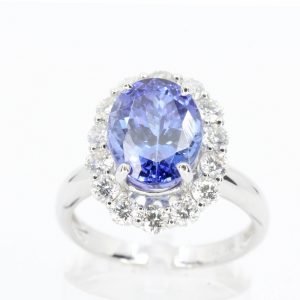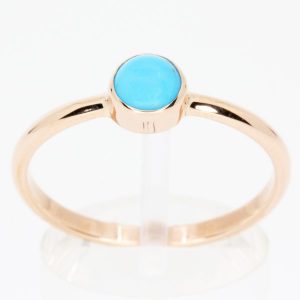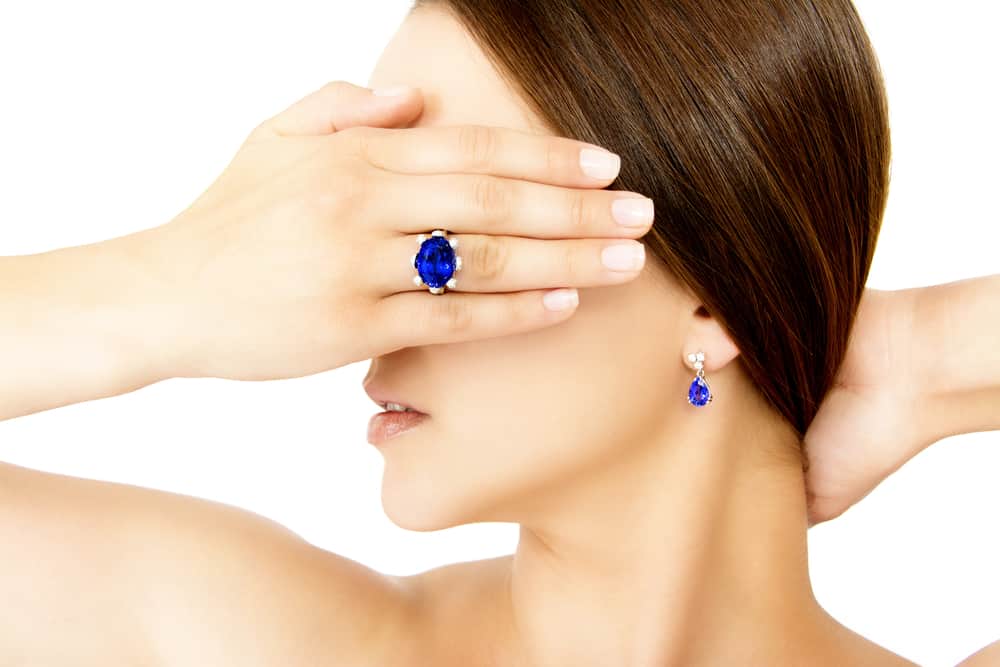The stunning tanzanite and turquoise gemstones share a few things in common – they’re both available in glittering shades of blue, they both suit a number of popular types of jewellery, and they both represent birthstones for the month of December.
And even if you weren’t born in December, both tanzanite and turquoise gemstones make for stunning statement or daily-wear jewellery pieces. Read on for more information about these precious gems’ history, varieties and key characteristics.
What is a tanzanite?

Named because of its geographic origins in Tanzania, the tanzanite is a stunning bluish-purple variety of the rare mineral zoisite. Many of the stunning colours of a tanzanite can be accentuated with specific cuts and heat that can highlight the attractive blues and purples and dim the undesirable brownish tones. In fact, most of the tanzanite on the market today is heat treated to reveal this effect and make the stone much more attractive.
History of tanzanites
The first rare blue variety of zoisite was discovered in 1967 – and to this day, tanzanite gemstones can only be sourced on a few small miles of land in Tanzania. The name ‘tanzanite’ was then bestowed upon the blue zoisite by Tiffany & Co. in 1968. An estimated two million carats of the stone were initially mined – and though the tanzanite’s history isn’t as long as some of its precious counterparts, it is highly prized for its rarity, limited supplies and worldwide popularity.
Today, Tiffany’s maintains one of the world’s largest and most impressive displays of tanzanite gemstones. The Smithsonian Institution in Washington DC also houses an impressive collection, which includes a rare cat eye tanzanite of 18.2 carats.
What are the different varieties of tanzanite?
As there’s only a small, select amount of tanzanite available worldwide, there are no species or varieties of tanzanite gemstones. The tanzanite itself is a variety within the zoisite family, alongside anyolites, thulites and ruby zoisites.
What is a turquoise?

Arguably the most mainstream of the December birthstones, turquoise is a semi-translucent gem that ranges from blue to green and has visible veins. Its name is derived from the French word for ‘Turkish stone’, and it is strong, yet soothing to the touch.
In terms of its meaning, the turquoise gemstone is believed to dispel negative energy and bring protection to those who wear it. As a ‘purifying’ stone, turquoises are also believed to be excellent for stress or depression, and can neutralise other physical issues.
History of turquoise gemstones
The Nishapur distract of Iran is one of the world’s turquoise hotspots, having mined the gemstones for over 1,000 years. New Mexico was another large turquoise producer, but has since been overtaken by Arizona and Nevada in terms of United States of America turquoise hotspots. And as far as production output, the Hubei Province in central China is the current largest producer of turquoise gemstones in the world.
Among many cultures, turquoises are believed to possess many powers. Two prominent powers are good health and fine fortune – and from the 13th century onwards, the turquoise gemstone was believed to protect the wearer from many forms of disaster. The turquoise gemstone is also extremely significant to Native Americans, who wear it to protect against evil. The Navajo also recognise the stone as a representation of the earth, sacred land, and all living things.
Rulers of ancient Egypt, pharaohs and Chinese artisans all adorned themselves with turquoise jewellery throughout history. Other notable figures who wore turquoise pieces include the Duchess of Windsor, Wallace Simpson and even King Tut, whose funerary mask was dotted with turquoise gems.
What are the different varieties of turquoise?
There are plenty of varieties of the turquoise gemstones. These include, but are not limited to, Bisbee, damele, kingman, morenic, Persian, pilot mountain and royston.
How did tanzanites and turquoises become the birthstones for December?
The original calendar of gemstones can be traced back to the Breastplate of Aaron. As described in the Bible’s book of Exodus, the Breastplate was adorned with gemstones that represented the tribes of Israel at the time. Based on this model, the modern birthstone list was created in 1912 – and it has since been defined by the National Association of Jewellers of the United States. The tanzanite gemstone was a later addition to this list, as it was deemed a December birthstone in the year 2002.
As well as representing one of December’s birthstones, the turquoise gemstone is often gifted as an 11th anniversary gemstone. Similarly, the rarer tanzanite gemstone is often gifted for 24th wedding anniversaries.
What jewellery pieces do tanzanite and turquoise gemstones go best with?
In jewellery pieces, turquoise gemstones are popular in statement pieces such as rings and pendants. As they are extremely versatile, they are also well suited in earrings, necklaces and bracelets.
In contrast, tanzanites are slightly more vulnerable gemstone than turquoise – and as such, they are more susceptible to scratching during daily wear. This is why the tanzanite stone is more suited for statement earrings or pendants than rings or more casual or daily-wear jewellery types.
You’ll need to take special care with both turquoise and tanzanite jewellery pieces – particularly tanzanite pieces. As mentioned above, the tanzanite gemstone is quite vulnerable and brittle, so it’s essential to avoid exposing the stone to sudden changes in temperature, or direct heat. Opt for warm, soapy water to clean tanzanite jewellery pieces, as electronic cleaners can cause irreparable damage to the piece.



 Sign in
Sign in Cart
Cart